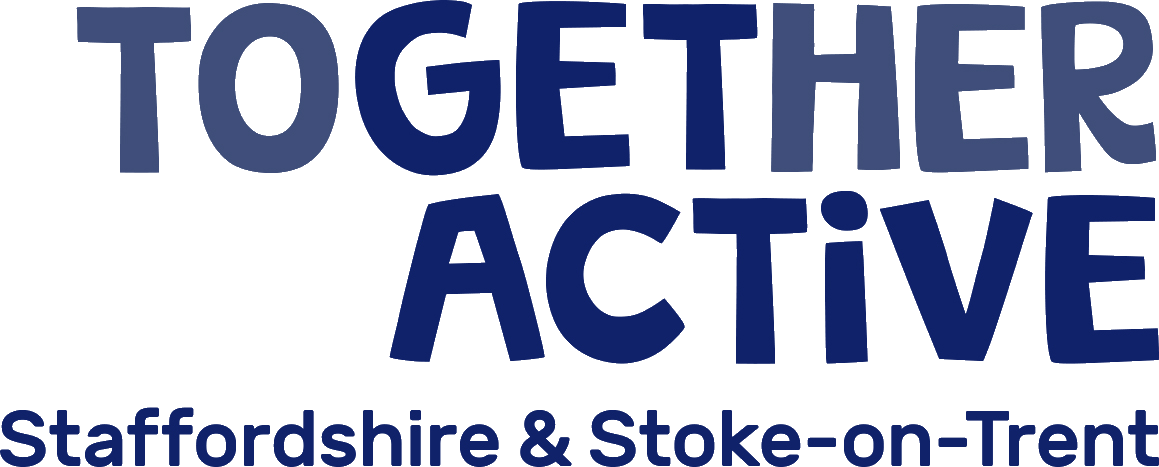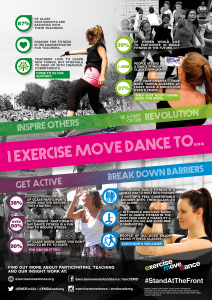2015, the year that proved everyone should exercise, move and dance!
If you teach, lead, manage, organise or have an interest in group exercise and dance fitness, you should take a couple of minutes to read the following;
Just over a year ago EMD Insight started on a journey to get to grips with understanding the dance fitness (and group exercise) markets. We wanted to know things like:
- Who are our consumers and how many of them are there?
- How fluid and transient are the markets and why are people joining and leaving?
- How can we get more people participating in England?
- What is happening within our workforces and what needs to be done to support them in order to invoke these changes?
Over the last 12 months EMD Insight have delivered three key outputs:
January 2015: Working in Fitness Survey in partnership with SkillsActive
May 2015: Dance Fitness – National Survey in partnership with YouGov
September 2015: Dance Fitness – Participant Survey in partnership with YouGov
To make it easier to digest, we have pulled out the key findings into ‘2015: A Year of Dance Fitness and Group Exercise Insight’ which you can view here along with the executive summaries of each report.
Each piece of insight has been developed and delivered in collaboration with the EMD Insight Group, which consists of representatives from fitness and dance organisations and providers across the industry. This partnership working has enabled EMD Insight to significantly increase its reach in to the market and ultimately to consumers. The fitness landscape is complex; it has, and continues to be a challenge to reach down to participants and teachers/instructors in order to establish their needs.
Arguably the biggest success to date has been sizing and understanding the dance fitness market (see below). We now know the significance of what we are dealing with and can use this evidence to influence and steer policy and practice as relevant.
There are multiple future challenges that we face as a sector. The largest presently visible challenge is the embedding of the quality findings we are collecting and championing change. There are clear actions that need to be taken in order to grow and sustain participation. EMDP cannot implement all of these changes alone and so will rely on their ability to influence and inform the sector to act and react.
EMD Insight is currently working on some exciting developments that will be launched in the next few months. In early 2016, we will be releasing participant market segments. Through our national survey and qualitative focus groups we have categorised dance fitness participants based on their attitudes, motivations and behaviours. The industry will be able to use these segments to more effectively target new customers. In addition to these, we will be releasing teacher market segments in the spring; a first for the industry. These latter segments will, in particular, help training providers to understand who may access their training and how they need to access it.
Below you will find an overview of our key pieces of insight to date. Please read, highlight, share and reflect.
We are one year in and there is a lot more progress to be made. We will continue to consult, question, probe and evaluate and, as always, are open to discussion.
EMD Insight
Participants
Market size
Nearly 1.5 million people are doing dance fitness every month. That puts it in the top five participation sports in the country. EMD Insight is making fantastic progress in understanding this market and the steps that need to be taken to sustain and grow it. Collective industry action is required to make this a reality.
Of all these individuals doing dance fitness, 97% are female. We know that women’s preferences are different to men’s; dance fitness is giving them an alternative to traditional sporting offers.
There is generally an even participation spread across all ages, and the levels of participation from disability and BME audiences matches their representation in the wider population. This is showing us that dance fitness is successfully offering inclusive opportunities. The typical drop-off in activity seen in pivotal life stages, such as school leavers, is not prevalent. Disabled people and those from BME communities are finding it as easy to participate in as most other individuals. Although this is extremely positive, we need to understand more about how this is being achieved so that it can be replicated and utilised to further increase participation.
Attendance habits
The majority of participants go to classes on their own. Although it may be nice to go with a friend, we need to make sure women know that the majority of people attend on their own; we don’t want this to be an emotional barrier.
Most of our exercisers do not like commitment. They want to be free to come and go as they please. Offering ‘pay as you go’ or flexible short term memberships will prevent this from being a barrier.
Inactivity
A massive 38% of current dance fitness participants were previously inactive before starting classes and over half of these had done nothing for at least five years prior. This is an amazing stat that needs to be shouted about; dance fitness is converting inactive people and has the ability to convert even more! No previous fitness or experience required!
Satisfaction
Once our participants get started, they enjoy their classes; over 80% are satisfied with their experience. This is one massive sales force.
Motivators and Barriers
Women’s lead motivations are losing weight and getting fit; messaging needs to be targeted to these benefits.
Lack of time and inconvenient activity offers top the barriers to taking part. Are we providing opportunities that are quick and easy to access? Is dance fitness keeping up with technological advancements?
A perceived inability and lack of confidence is stopping some women from starting classes. These women think that they are not good enough to take part. This myth needs to be broken down through clear targeted messaging. We need classes for beginners that are very clearly marketed as classes for beginners; ‘NO experience necessary’ and ‘this is for PEOPLE LIKE YOU!’
Latent demand
A staggering 39% of all women have expressed an interest in participating in dance fitness. Only a quarter of these women say they know what is available near to them. The highest demand is from 26 to 44 year olds. This demand is massive; acting on insight, addressing barriers and adapting messaging can turn some of this demand into reality.
Workforce
We have a passionate workforce; in fact, 70% became teachers and instructors for this very reason.
The majority of our workforce is female and are part-time or self-employed. Are we targeting our training products effectively to this market and their specific female needs? Our industry offers an opportunity for additional income through flexible hours that can be worked around a family. We should be utilising this messaging.
The majority of our workforce plan to take continued professional development (CPD) in the next 12 months; most of them want to do more training to work with existing clients. Currently, functional training and group exercise are the areas of most interest.
These teachers and instructors are well educated; the largest majority have a degree or above. We have a knowledgeable group of individuals who want to learn more about the people that they are working with. A lot is expected from our workforce; they are fitness instructors, not doctors! They want to be able to safely and confidently meet the expectations placed on them. We need to ensure our training is tailored to this audience; currently the second highest barrier to training is a lack of suitable provision.
The biggest challenges teachers face are financial, especially in terms of keeping their classes running and attending further training. There has been a real time-pay decrease over the last five years. We must ask ourselves how we are supporting our workforce so as not to lose them. Are we helping them enough with the wider business skills and tools that they need to succeed? Do we have the technological solutions in place to offer lower cost and easier to access training?
In conclusion
Collectively, as an industry, we are engaging an amazing number of people in dance fitness and group exercise.
Collectively, as an industry, we have some progress to make to support our workforces to continue to deliver to the excellent standards that they are.
Collectively, as an industry, we have some challenges to face to enable us to leverage the massive latent demand from currently inactive women.
Collectively, as an industry, we’re all in it together.
If you would like further information, please contact Jade Moulden on 01403 266000 or email jademoulden@emdp.org.



